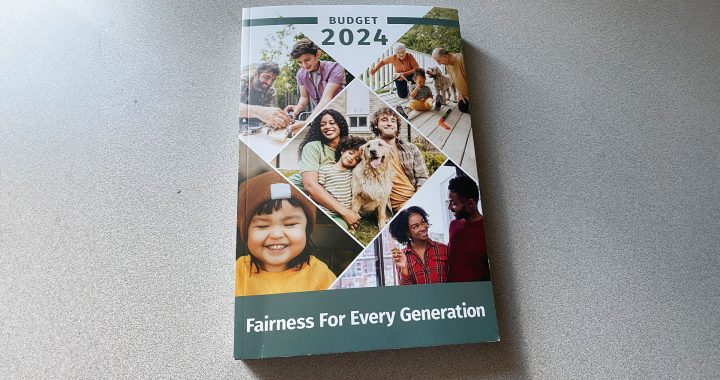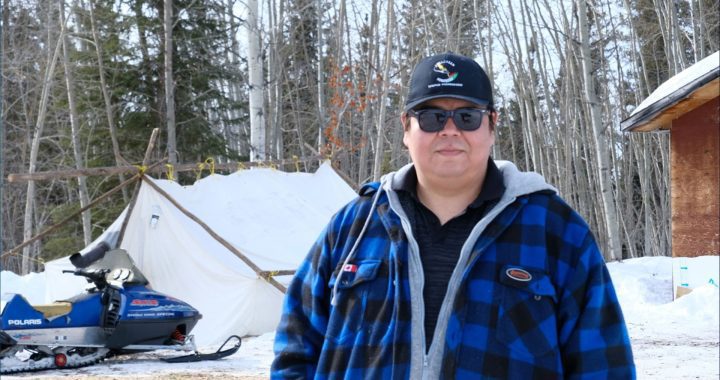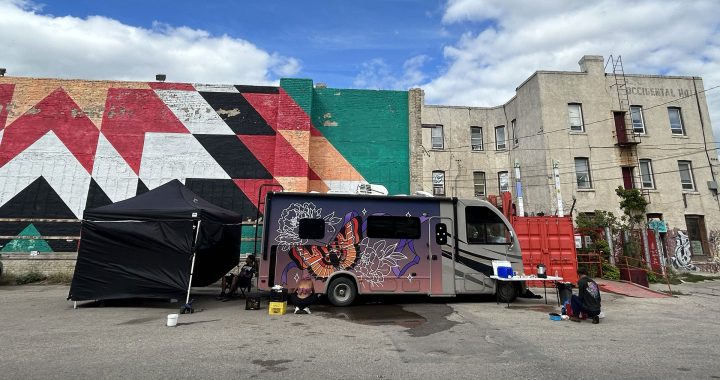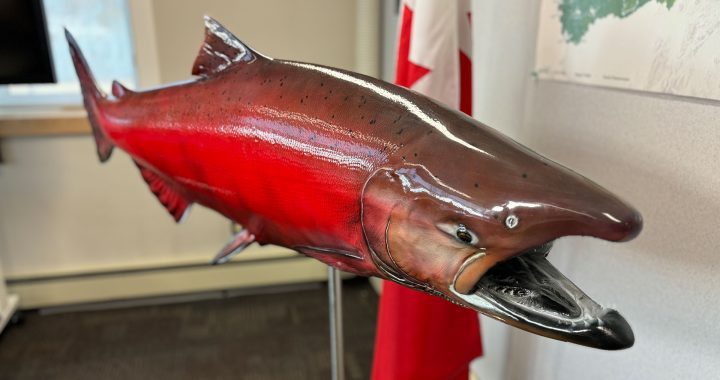
Another class-action lawsuit has been filed against the federal government due to its discriminatory underfunding of the First Nation child welfare system on reserves and in the Yukon.
The Assembly of First Nations (AFN) filed a statement of claim on behalf of the class Jan. 28.
The statement was amended Friday.
The amended claim names Ashley Dawn Louise Bach, Karen Osachoff, and Melissa Walterson as plaintiffs.
“Year after year, decade after decade, generation after generation, the Crown has systematically discriminated against First Nation Children because of their race, nationality and ethnicity and created a Removed Child Class,” wrote lawyers from Strosberg Sasso Sutts LLP.
The lawsuit seeks $10 billion in damages for harms resulting from the “willful and reckless,” discriminatory underfunding of the system as well as the Crown’s “egregious” failure to comply with Jordan’s Principle.
It’s the second court case seeking damages to compensate First Nations children on reserve harmed by government child welfare practices.
The Canadian Human Rights Tribunal (CHRT) also awarded First Nations children on reserve and their families compensation Sept. 6, 2019. It ruled that Canada discriminated against kids in a historic ruling handed down in January 2016.
A judicial review requested by the federal government to quash that ruling is pending, though the ruling still applies.
Certification is pending for a similar class-action that named Xavier Moushoom and Jeremy Meawasige as plaintiffs.
In an interview with APTN News, AFN National Chief Perry Bellegarde said the CHRT ruling is moving forward, but it leaves some things out.
“There was another piece left out, which was dealing with the overall systemic racist discrimination. In that binding tribunal decision there were some pieces left out. So if you want to overhaul a system on reserve and off reserve, you need to look at it comprehensively and not leave any other survivors out.”
He said he believes AFN should be involved given its involvement with the CHRT decision starting over a decade ago.
The government has a month to file a statement of defense.
Scooped at Birth
Ashley Dawn Bach was scooped at birth from her mother, a member of the Mishkeegogamang First Nation in northern Ontario.
This would have made Ashley a status Indian member of the First Nation.
But she was taken off reserve and placed in a special-needs, non-Indigenous foster care home in Langley, B.C.
A non-Indigenous family adopted her at age five.
Without access to her Ojibway culture, she endured racism while living in a hostile environment with her adopted family, according to the statement of claim.
At 18, she left that hostile environment. She reconnected with her culture and wants to overcome the harms she suffered at the hands of the child welfare system.
The other two plaintiffs – Karen and Melissa – are sisters.
Karen was named Erin Faye Kahnapace when she was born in Regina, Sask. in 1979.
She was apprehended as an infant. In 1982, by order of the Queen’s Bench of Saskatchewan, the court ordered her name changed and ordered her adoption.
No one told her she was a member of Pasqua First Nation in Treaty Four territory, southern Saskatchewan.
In 1990, after her adoption broke down, she was apprehended for a second time. She was then re-entered into foster care, where she remained until age 18.
She too overcame the struggles inflicted upon her by the child welfare system.
Karen graduated from law school in 2009 and was called to the Ontario Bar in 2012. She was called to the B.C. Bar in 2015 but is now a non-practicing member.
She only reconnected with her sister Melissa last year, after living most of her life alienated from her family, community, and culture.
Melissa is a member of the Nisichawayasihk Cree Nation in Manitoba. The claim argues that she lost “love, care and companionship” due to the severing of the sibling bond.
Melissa represents the family of the removed child class.
Bellegarde said AFN chose these survivors because their stories represent the widespread experience of a system that focusses on apprehension, not prevention.
“Even a simple thing as being apprehended when you didn’t have to be apprehended,” he said of their lives.
“You faced racism, discrimination. You were basically taken away from your family, your community, your nation, your tribe. You faced sexual abuse, physical abuse, the whole alienation from your people, and you didn’t have access to the same programs on reserve.”
It’s about putting the needs of children and survivors first, he added.

CHRT ruling: a “class-action by another name”
The tribunal determined that the discriminatory underfunding of the on-reserve child welfare system created an incentive to remove First Nation kids from their homes and place them in care.
The tribunal awarded a maximum compensation of $40,000 to each victim and certain family members who also suffered.
The Moushoom and Meawasige case was filed in the spring of 2019. It seeks $6 billion in damages.
The federal government has wavered on its position regarding these lawsuits. The feds want to quash the CHRT ruling through a judicial review.
Robert Frater represented Canada in Federal Court on Nov. 25 where he asked for a stay of the CHRT decision pending the review.
He called the tribunal ruling “a class-action by another name.” He said it awarded settlement to a class that was not clearly defined.
Frater did not say that the government would prefer to use the Moushoom case as a vehicle for settlement, but he did say that a systemic complaint requires a systemic solution.
But Attorney General David Lametti and Minister of Indigenous Services Marc Miller did. They issued a joint statement while Frater pled his case in court.
The feds pledged “to work with plaintiff’s counsel with the goal of moving forward with certification” of the Moushoom case, the ministers said.
“The Government of Canada is committed to seeking a comprehensive settlement,” they said.
The government lost that case in Federal Court, meaning they have to abide by the ruling even though a judicial review is pending.
The government walked the commitment to certify back, according to David Sterns. Sterns said his firm, Sotos Class Action, received materials opposing certification.
NDP Charlie Angus believed the timing of the joint statement was “a cynical ploy” to manipulate the Federal Court’s decision.
The federal government said it spent over $5 million fighting the human rights case in court since 2017. APTN has put that figure closer $8.3 million, as of 2017.
Read more:
Documents suggest Canada paid millions more than admitted to fight Cindy Blackstock
How many First Nations kids are in care? Canada is trying to figure that out now
‘Cynical ploy’: Trudeau government flip-flops, now plans to fight child welfare class-action
The new lawsuit appears to address Frater’s concerns by defining four classes separately – and offering the systemic solution Frater asked for.
These are the removed child class, Jordan’s class, family of the Jordan’s class, and family of the removed child class.
Thus, the new lawsuit defines the family members as part of class and differentiates between those harmed due to ignorance of Jordan’s Principle and those harmed by the underfunded welfare system.
Jordan’s Principle states that when jurisdictional disputes arise between provincial and federal governments over who should provide social services, the first department contacted should cover the costs and seek reimbursement after. This would ensure there are no gaps in the provision of government services.
Three court cases
In 2007, the First Nations Child and Family Caring Society and the AFN brought forward the human rights complaint that eventually became the CHRT ruling.
Robin McLeod Shaeogesic, youth and reconciliation co-ordinator at the Caring Society, asked Indigenous Services Minister Marc Miller about the tribunal ruling on Thursday.
“What are you going to do to end all inequalities for public services for First Nations children and their families,” she said into a microphone at the Chiefs of Ontario special assembly in Ottawa.
“We are looking at three separate court cases,” Miller replied, referring to Moushoom, the tribunal, and the new AFN suit.
“We face three decisions, and it’s difficult from our position. Again, it’s not insurmountable, but we face a challenge of having to look at those three different court cases and try to approach it in an equal fashion. That isn’t without some challenges.”
He concluded by saying he wanted to keep discussions confidential as possible.
National Chief Bellegarde said he hopes the government doesn’t fight certification of the new suit.
“We’re hoping that the federal government will make that decision soon.”










Thank you to AFN and the First Nations Child and Family Care Society for supporting the claimants of the Class Action for child welfare compensation. Since the 60’s Scoop Class Action, I feel as if I’ve been regurgitating a past that have both mixed good and bad memories. As a young adult, I remember telling a former supervisor that I’d been angry with the gov’t for not providing more help to my mother [who’d had 5 children, I’d become permanent ward, 2 siblings had been adopted and 2 other siblings had moved with their biological father]. I have not yet been approved or rejected by the 60’s Scoop – Collectiva as of yet. I feel that if there had been more preventative measures in place, my mother would’ve lived a longer life and wouldn’t have had to grieve the ‘loss’ of any of her children. Although, I’d been placed in other First Nation homes [with families – to whom I’m still grateful for, to this day…]; they were not from my own community. I still feel displaced, forgotten and alienated. My experience is not unique, I understand this. I really feel that the gov’t needs to be held accountable, as there had been a ‘fiduciary’ responsibility they’d made a promise to adhere to and they’ve failed miserably [understatement of the century]. It is with hope that these class actions, some of our First Nations people receive justice and be compensated. Not only compensation, but also, follow through with changes to the Child Welfare Act and stop displacing our children!
whT bout first nation children who are taken from there parents who arnt status but the parents are but they dont live on the reserve. what about those kids that are then taken from there extended familys homes after being removed from there parents and then they ended up living in group homes of non native people . in homes were there is 8 and 9 kids in the home. and not being allowed to talk to there parents or see there parents . and there parents have done nothing wrong